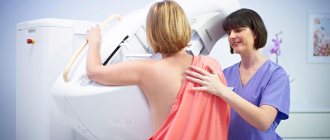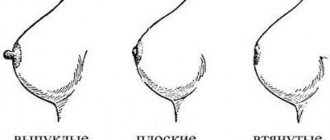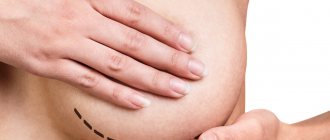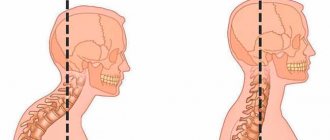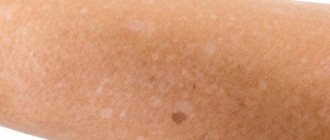It is difficult to underestimate the aesthetic role of the nipple. Their size and shape largely determine the sexuality and beauty of a woman's breasts. Deformation of the nipple, incorrect positioning of the nipple on the mammary gland, too large or too small nipples are a number of aesthetic problems that cause severe psychological discomfort in women. And, as a rule, a woman begins to think about correcting the defect with the help of plastic surgery.
Deviations in the structure of the breasts develop internal complexes in a woman, forcing her to hide her breasts, which affects her intimate life. One of the aesthetic defects is inverted nipples that do not protrude beyond the areola.
The problem of inverted nipples is quite common and affects one in ten women. The situation entails a number of both psychological and physiological inconveniences: complexes about aesthetics, fear of developing cancer, difficulty breastfeeding, etc.
Fortunately, inverted nipples can be treated quite successfully both conservatively (with early development of the pathology) and surgically. But let's talk about everything in order.
Thus, a woman with inverted nipples experiences difficulty breastfeeding, since it is extremely difficult for the baby to latch onto the breast and hold it while sucking milk. In all cases, an operation such as mammoplasty comes to the rescue.
An inverted nipple can also cause the development of inflammatory processes in the mammary gland, such as maceration (swelling) as a result of the accumulation of fat and foreign particles in the nipple cavity. In rare cases, an inverted nipple may be a symptom of more serious breast diseases (including cancer).
How to identify if you have inverted nipples?
First of all, it should be noted that inverted nipples can be either hidden or tightly inverted. In the first case, the nipple “appears” during sexual arousal, pressing on it, or during breastfeeding, in the second, it constantly remains under or at the same level with the areola (the area surrounding the nipple).
The presence or absence of inverted nipples can be determined at home. To do this, stand in front of the mirror, place your thumb and index finger on the areola (at a distance of about 2 cm from the nipple itself) and gently squeeze. The reaction of the nipple can indicate the degree of its retraction:
- First degree . Even slight pressure on the areola reveals the nipple. If you remove your fingers, the nipple maintains its position for a while and then slowly retracts back.
- Second degree . The nipple is pulled out when there is noticeable pressure. If you release the areola, it immediately returns to its original position.
- Third degree . An inverted nipple has no response to pressure. Breastfeeding is impossible in this case, but milk is released. The situation is aggravated by a predisposition to the development of various infections, inflammations and other complications.
It is worth noting that both nipples must be checked: the presence or degree of nipple retraction on different breasts may not be the same. However, in any case, you should contact a specialist at the first suspicion of retraction: this will avoid various complications and further progression of the disease.
What are the different sizes and colors of areolas?2
The areola is the pigmented area of skin that surrounds the nipple. It can be of different shapes, sizes and colors. This depends on many factors, from race to genetic predisposition. The areola is a unique part of the female body, however, curious scientists have conducted a number of studies and came to the conclusion that the average diameter of the female areola is approximately 4 cm.
The shape of the areola can be of three types - round, elliptical or oval. In rare cases, a woman may have a complete absence of an areola.
The size of a woman's areolas increases with age in 80% of cases. During adolescence, the areola is on average 2-2.5 cm in diameter, and after 50 years, in some women the diameter of the areola can reach 10 centimeters or more.
The size of the areola also increases in almost all women during pregnancy, after childbirth and during breastfeeding. It may return to the original indicator, or it may not - this is the physiology of the female body, in which there is nothing terrible.
The color of the areola can also be completely different. It directly depends on the race, skin color, age and period in a woman’s life. Acceptable colors are pink, beige, brown, coral and chocolate and their different variations.
By the way, today there is an interesting procedure called “permanent areola makeup.” It helps give this area of the female breast the desired color - the intervention is performed solely for aesthetic purposes. If you have the opportunity and desire, you should not deny yourself such a metamorphosis, because it is very important for a girl to love herself and her appearance.
Why is the nipple retracted?
- genetic predisposition;
- pathology of the development of the genital organs (underdevelopment and hypofunction);
- insufficiency of development of the milk ducts;
- diseases of the mammary glands.
Acquired factors for the development of inverted nipples include:
- Complications of various diseases (infectious and inflammatory processes, oncology, etc.);
- Wearing a bra that is too tight and puts pressure on the mammary glands for a long time.
It is worth noting that if there are no visible causes for the development of inverted nipples, you should immediately consult a doctor. The same applies to the situation if, along with retraction, various types of liquid begin to be released from the nipples.
Prenatal practice
Today, there are many methods that help change the shape of this part of the body, preparing it for breastfeeding. For example, not so long ago a very popular practice was to help stretch out a flat nipple before childbirth. However, over time, it became clear that such a technique did not bring much results. As noted by experts involved in prenatal nipple reshaping, the time that expectant mothers spent in classes worked directly against them. While physiological changes were noted for the better, the psychological state of the women worsened with each session. And even after giving birth, some of the women immediately resorted to bottles, without even trying to feed their baby at least once.
After giving birth, every second mother was sure that she was not able to breastfeed her child due to an existing pathology. And even if everything worked out on the first attempt, the woman was afraid to breastfeed the second time, expecting that failure was about to come.
Conservative treatment of inverted nipples
Conservative treatment consists of both self-performed manipulations and the use of special medical devices.
For example, to correct the first degree of inverted nipples, you can try to use the Hoffman method. To do this, the thumbs must be placed on the base of the nipple opposite each other. Next, you need to gently pull the base of the nipple (areola) with your thumbs in opposite directions. The stretching must be repeated in all possible directions. The exercise should be started twice a day, gradually increasing approaches to five.
It is worth noting that oral and manual stimulation of the nipples during sex has a positive effect on the correction of inverted nipples. In addition, experts advise “twisting” the nipple between your fingers a couple of times a day.
To treat inverted nipples with specialized medical devices, among other things, a special vacuum attachment is used.
First of all, the nipple is lubricated with Vaseline. Next, the nozzle is applied to the chest, fixed with a surgical plaster, after which air is pumped out of it to create a vacuum. The device should be on the chest throughout the day, but is periodically removed to examine the condition of the skin (irritation or cracking is possible).
The duration of treatment is determined by the condition of both the nipple itself and the breast as a whole. Typically, treatment takes about 10-14 days.
Surgical treatment of inverted nipples
The surgical procedure depends on whether the patient plans to become pregnant in the future. If pregnancy is planned, the surgeon preserves the integrity of the milk ducts; if not, he dissects them. There is no big difference in the final results, but you should be aware that the preservation of the milk ducts can cause repeated nipple retraction (although the risk is still very small).
Regardless of whether the milk ducts are dissected, the operation can be performed either under local anesthesia or general anesthesia. To achieve better results and high aesthetics, the work is performed under a microscope.
Progress of the operation with preservation of the milk ducts:
- Anesthesia.
- Making incisions several mm long extending from the nipple.
- Release of the nipple and prolongation of the milk ducts.
- Creation of a triangular skin flap.
- Nipple pulling.
- Stitching.
The operation to correct the nipple while preserving the milk ducts lasts about 40 minutes.
Plastic surgery of inverted nipples with dissection of the milk ducts has a slightly different procedure:
- Anesthesia.
- Nipple incision.
- Dissection of the milk ducts.
- Stopping the bleeding.
- Applying internal sutures.
- Applying external sutures.
This operation lasts about an hour.
Diagnostics
A mammologist is involved in clarifying the nature of the pathology that causes nipple retraction. The following diagnostic measures are recommended:
- Questioning, external examination
. The doctor determines when nipple retraction appeared, what symptoms it was accompanied by, and how the disease developed. Examines and palpates the breast, assesses changes in the nipple and mammary gland, detects deformations, determines the presence, size and location of lumps, examines regional lymph nodes. - Ultrasonography.
It is more informative in young patients. Visualizes neoplasms, areas of necrosis, changes in organ structure. Allows you to assess the condition of the milk ducts. - Mammography.
Detects tumor nodes, subareolar microcalcifications, areas of fibrosis. Makes it possible to determine the thickness of the skin in the area of the nipple and areola. According to indications, it is supplemented with ductography and tomosynthesis. - Other imaging techniques
. MRI is used to detect preclinical changes. Scintigraphy is prescribed to confirm damage to the ducts in Paget's cancer, to clarify the size, nature, location and distribution of nodes in all forms of cancer. - Breast biopsy.
To collect material, a puncture, trephine biopsy or fine-needle biopsy is performed. The tissue sample is sent for histological or cytological examination. Similar tests are carried out after obtaining an impression smear from the nipple of the mammary gland. - Laboratory research
. They are used to identify tumor markers, determine the level of female sex hormones, and assess the general condition of the body.
Surgical correction of inverted nipple
Conservative treatment or surgery – which is better?
The treatment method depends entirely on the degree and cause of nipple retraction. If the degree is initial, you can try to correct the situation with a conservative approach. However, grades 2 and 3 retraction, in most cases, require surgical intervention.
It should be noted that the conservative method is not always completely effective and signs of inverted nipples (as well as complications) may reappear some time after treatment. Thus, the only radical way that will allow you to say goodbye to inverted nipples once and for all is surgical treatment.
Postoperative period: what to expect and how to behave?
After the operation, bruising and swelling of the chest may be observed, which disappear without a trace within a couple of weeks. Thanks to small incisions and work under a microscope, the sutures heal quickly and there are practically no traces left of them.
For some time after surgery, a woman may notice a decrease in the sensitivity of the areolas and nipples, but within a few weeks the sensitivity returns.
The postoperative period requires avoiding visiting the solarium and sauna. If possible, you should avoid physical activity and stressful situations. In addition, it is recommended to walk more and breathe fresh air.
It is worth noting that prevention obliges the patient to visit a specialist at least once every six months, even if the operation is successful.
